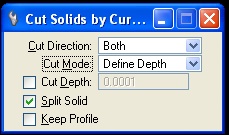- Select planar Surface by Points icon (menu item A 10)
COMPUTER
AIDED
ARCHITECTURAL DESIGN
Workshop 5 Notes,
Week of September 30, 2012
Projection With Surface and Solid Editing
PART I: SURFACE EDITING
1. Surface and View Extractions
Surface
Modeling Toolset Menu
- Select planar Surface by Points icon (menu item A 10)
![]()
- create planar surface with UV 10 and 10 (A0)
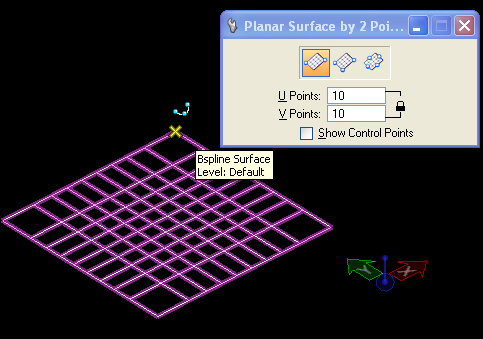
- Grab handles with the selection tool, elevate points to make wavy surface, using the "f' key to move the surface vertex upward in the front construction plane.
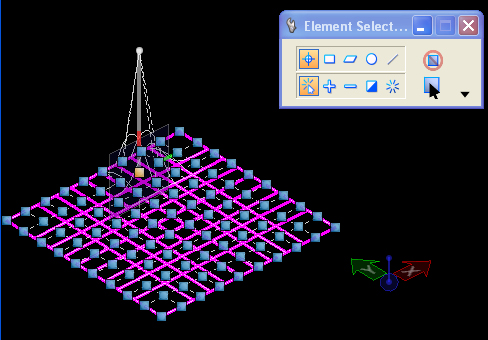
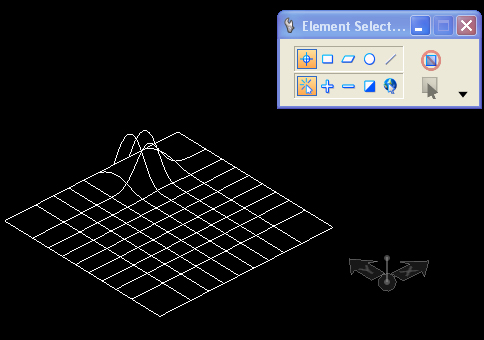
before after
- change color -> Draw a polygon shape on top of the planar surface
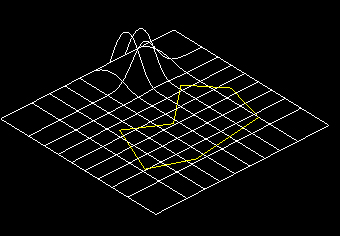
- change color -> Draw Circle on top of the planar surface
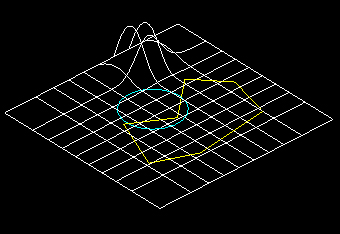
- change color -> Draw a bSpline on top of the planar surface
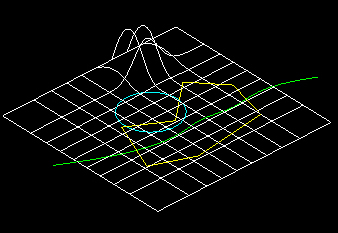
- grab all three and use the Move tool to reposition them (use the Fkey to move them in the front Construction Plane) to hover above the surface.
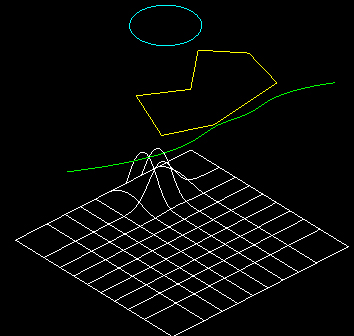
- Grab whole set - and use the Copy command to make a Copy to the side
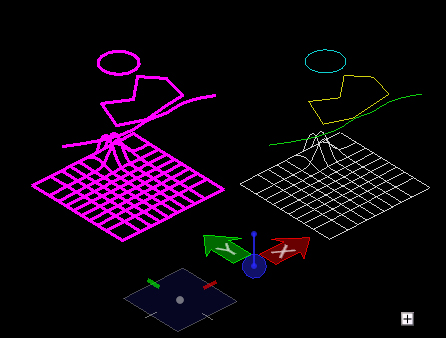
- Zoom
to first surface
- Select Trim Surfaces by Curves tool (S2)
![]()
- Make
sure Keep Profile is checked.
- Option Trim Surfaces / Orthogonal
- Select Surface, select polygon. - Note where grabbing surface -
internal or external to projection is portion retained
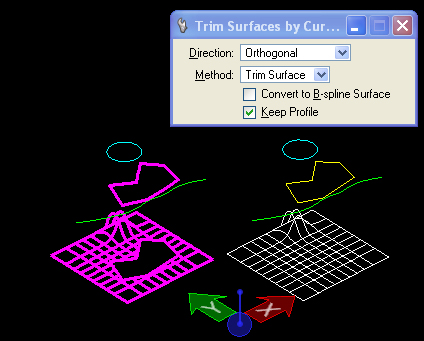
- Do the same command again with Circle
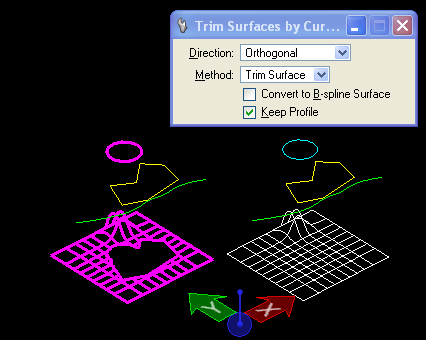
- Do the
same command again with bSpline
- note again which side you grab on surface matters to what is retained.
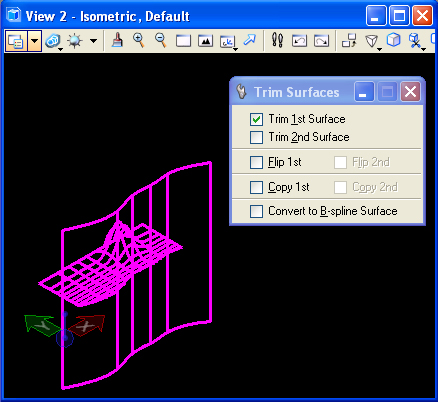
2. Now
revisit the same tool but change the settings.
- Change settings to Split Surface - test for polygon, circle and
bpsline.
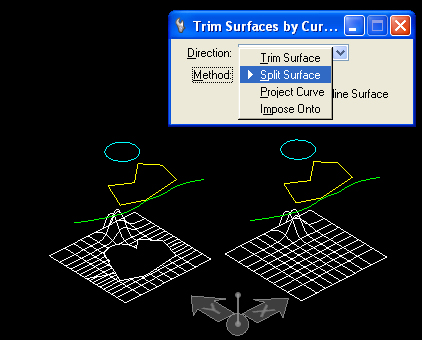
polygon split surface
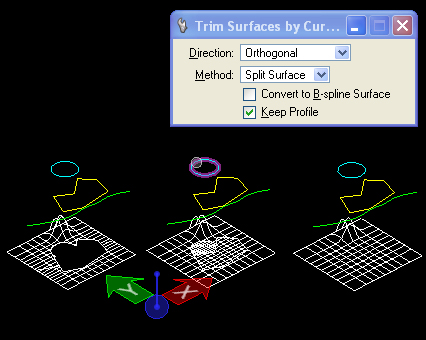
circle split surface
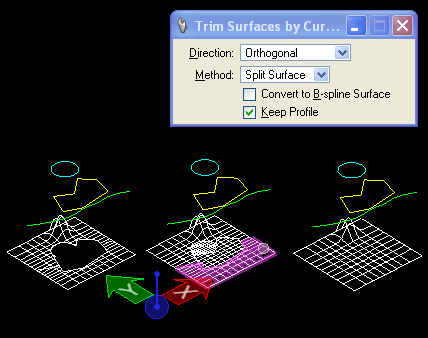
bspline split surface
3. Change to Method to Project Curve - repeat the command on the above three elements
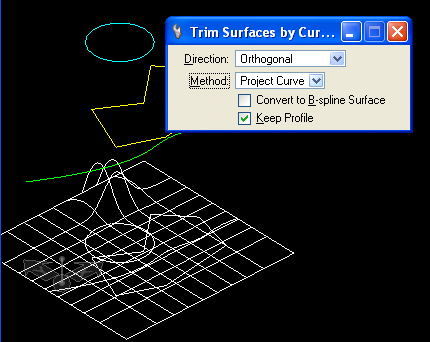
projected polygon, circle, and bspline
- Mesh From Element (D1) tool
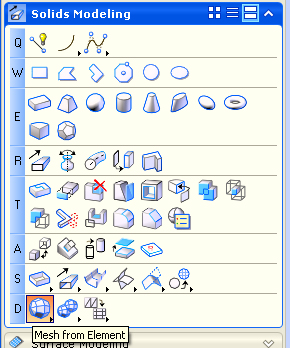
4. Apply mesh from element tool on simple solid sphere --> get terrain-like triangulated surface
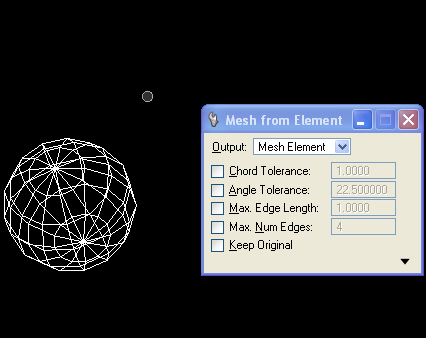
- Go back to Trim Surfaces tool, with Trim Surface method - perform on the meshed surface. Similar results.
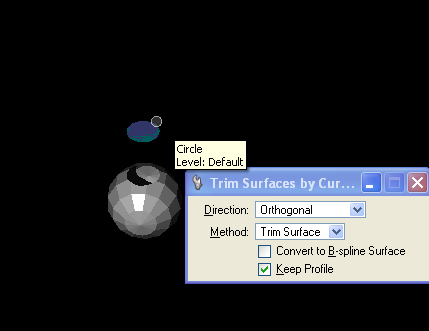
5. Reverse Method (( SHOW ONLY ))
(Rotate/Copy mesh surface and bSpline up to a standing wall-like
orientation, use Trim Tool in from an elevation direction)
- We're doing these on top-down surfaces, but they work just as well
standing up.
Make a
Copy of one of the original surfaces
- Untrim Surface tool (S3)
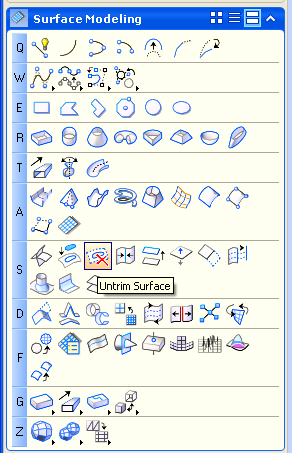
- Select Reverse as method and see what happens.
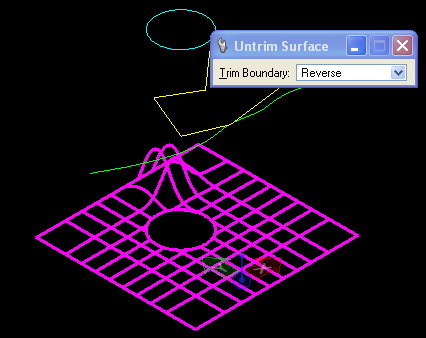
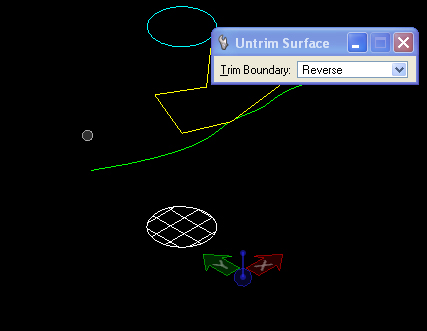
- Select Remove All as method, to remove all cuts and get back to original uncut surface.
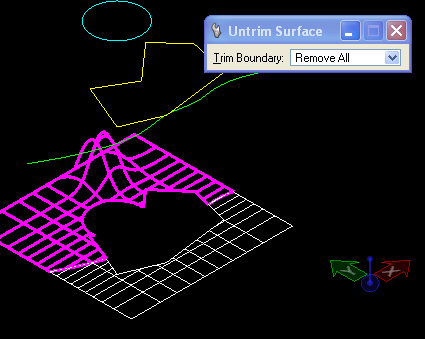
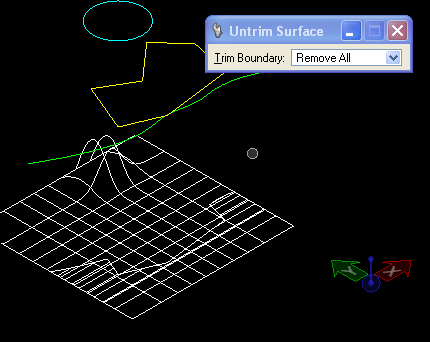
6. Rotate
surface upon itself using Front Constuction
Plane and 3 Point method, Making a Copy
now we have two intersecting surfaces.
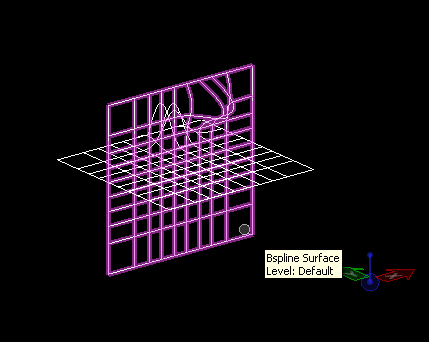
- Use Trim Surfaces (S1) tool. Select both Trim 1st and Trim 2nd
Surface options. Select the pieces of each surface you want to keep.
![]()
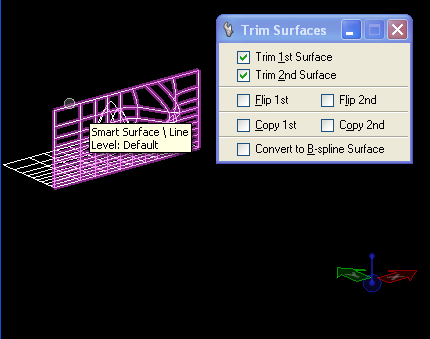
Planar Slice Tool - extract sections and profiles of geometry
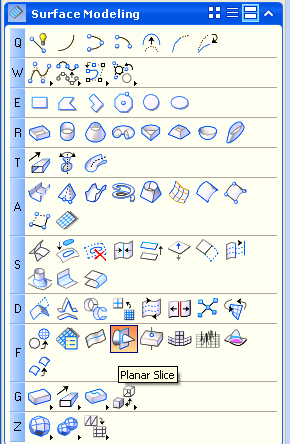
7. Planar Slice
- Copy
and Untrim the surface again (or just undo a few times)
- Go to the Top View orientation
- Draw a line over and bypassing the surface.
- Copy the line several times to make a bunch of them at equal
intervals. (use number of copies option on copy tool)
- Now using the selection tool, grab all of the lines
- Use the Planar Slice tool (F4) with the First option icon (Slice by
Element), perform the operation in the top view window and confirm.
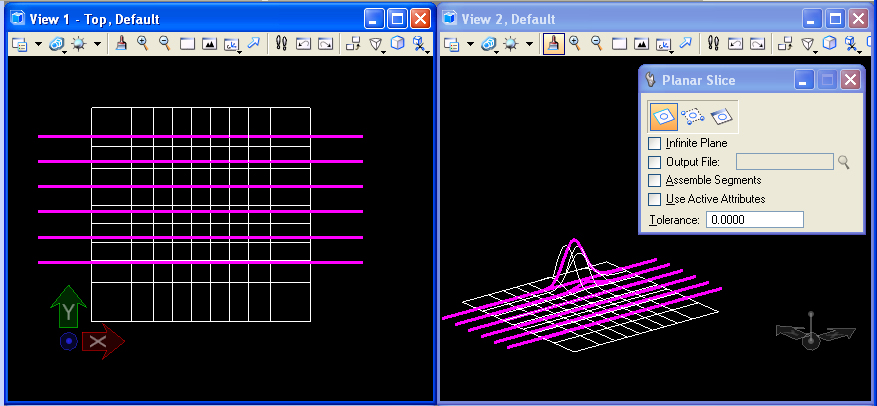
- Rotate around to see the sliced section lines. You might need to delete the surface or change layers to see it clearly.
(( SHOW
ONLY ))
Triming surfaces can also be done with planar, non-planar and
non-linear elements
- draw a polyline at various right angles across a mesh surface.
Extrude the polyline
in both directions to get an folded upright plane.
- use the Planar Slice tool to generate the section along the upright
plane.
- Or, intersect a surface a bSpline curve extrusions and edit
it
with the Trim Surface tool.

PART II: FENCE TOOLS
Fence tools allow
you to select a portion of a view window and to perform operations on
it, such as editing, deleting, moving, copying, rotating, scaling or
stretching geometrical elements. You can also render a
sub-portion of a window through the use of a fence tools. The
fence tool is projected into the view window to perform these various
operations.
1. Copy and Clip Operation
Within
MIcrostation V8i, start a new drawing, open the
Utilities>Auxiliary Coordinates dialog box. Use
the save ACS icon in upper left-hand corner and save
the current default ACS plane as "base".
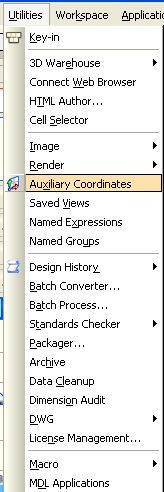 |
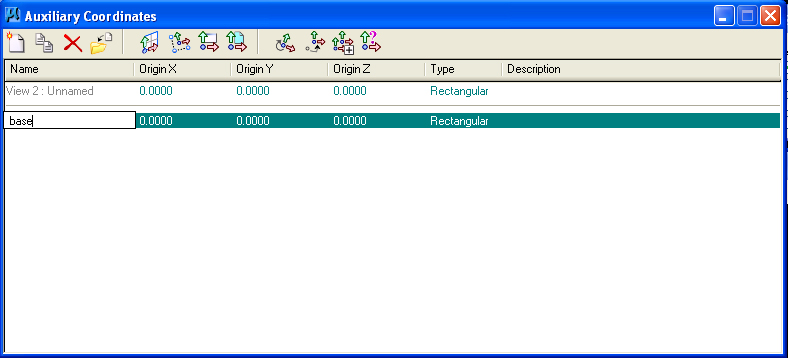 |
|
|
|
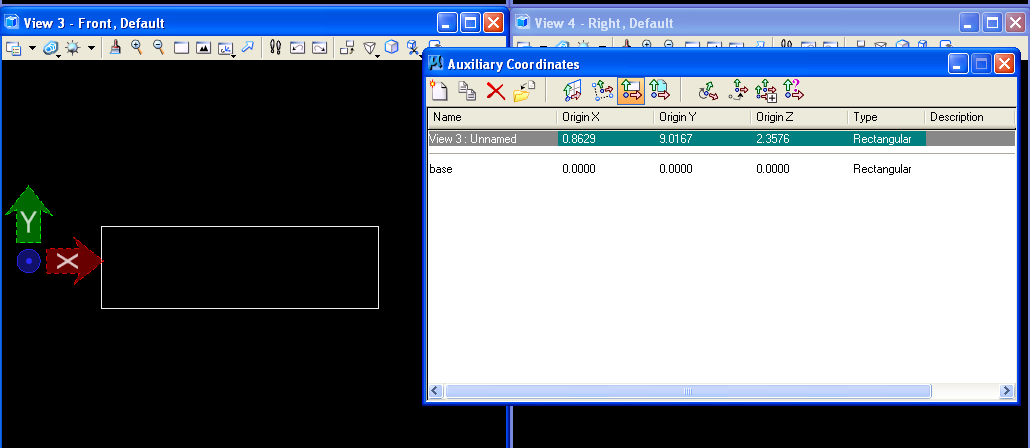
Save the new ACS as "front" within the Auxiliary Coordinates
dialog box.
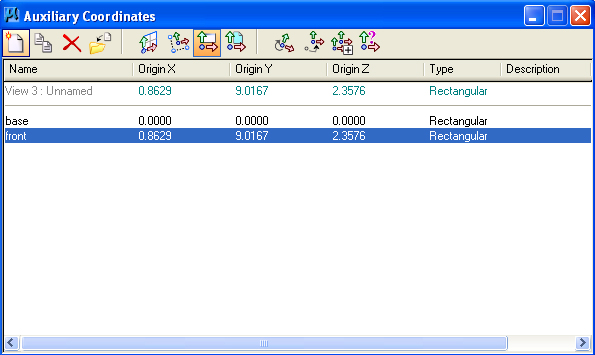
Open the fence tools subpalette from the main task menu (#2 key).
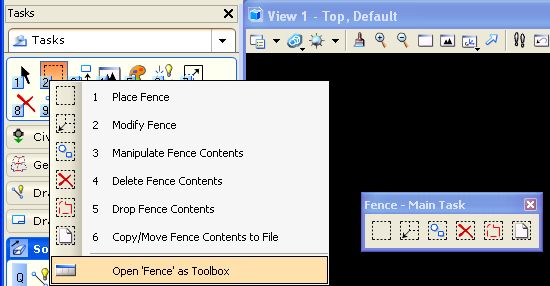
Draw
a "Fence" in the front view window with "Fence Mode" set to
"Clip". This mode isolates what's inside the fence from the outside.
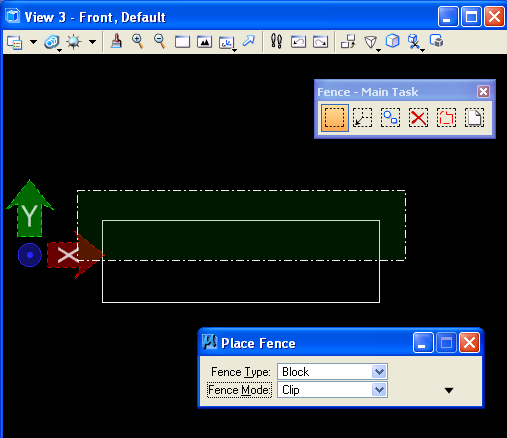
Select the "Manipulate Fence Contents Icon" (second icon in
the Fence palette) andnthe "Move" option, and enter two data
points in the front view with to clip off and move upward the geometry
that is encompassed within the fence.
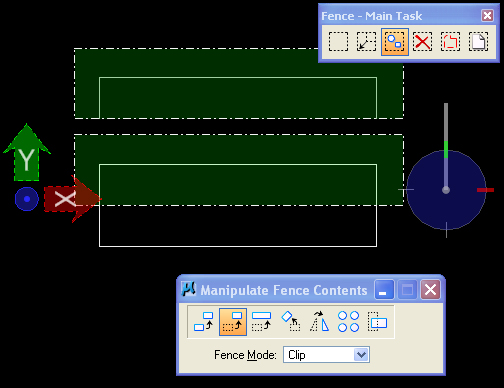
Similarly, select the top
view window. Select the "base" ACS form the Auxiliary Coordinates
Dialog box, and repeat the same move operation on the upper
"Y" axis portion of the cubes from the top view.
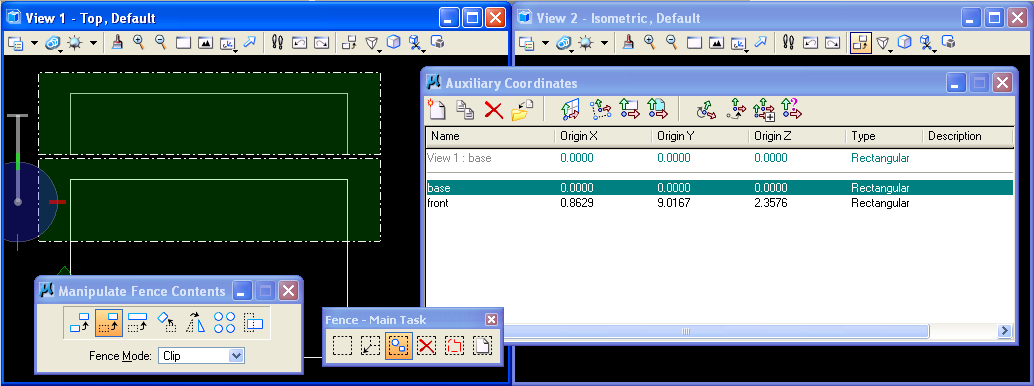
The result of the preceding two operations is to splice the slab into four slabs. Note that the fence tool in the top view operates on upper visible slab as well as the occluded lower slab in that view. That is, the fence projects the operation entirely through every object in its pathway in that view.
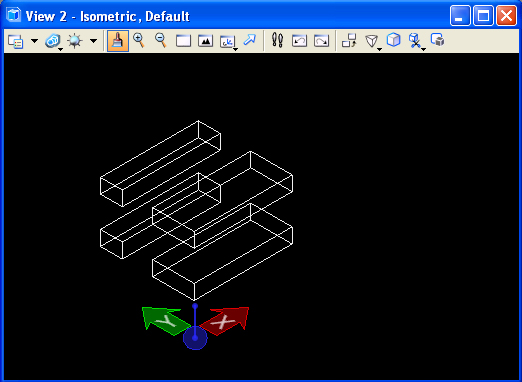
2.
Stretch Operation
Re-select the front view, then select the "front" ACS in the Auxiliary
Coordinates dialog box, and place the fence over the slabs in
the lower portion of the view window. Next use the
"Manipulate Fence Contents" and "Stretch" tool option (shown
below) to change the height of the cubes on the ground plane..
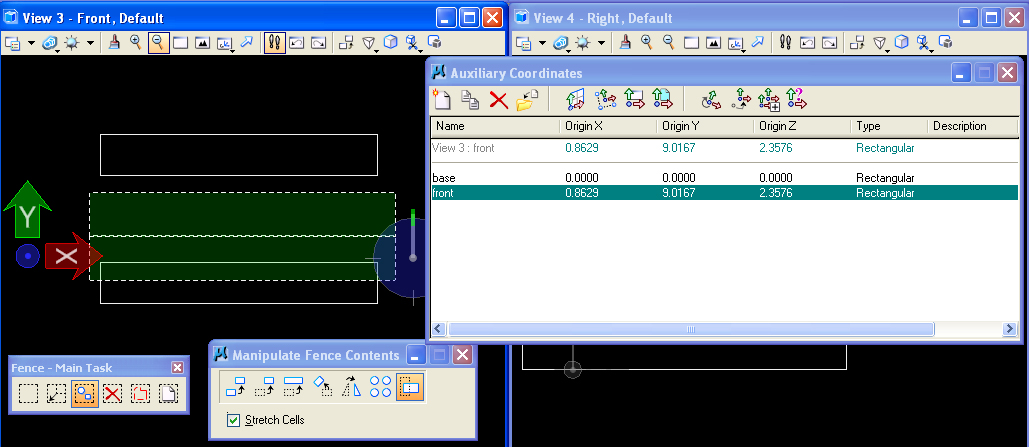
Once again, the fence projects the operation entirely through every object in its pathway in that view and they are stretched to have a larger "Y'" dimension. Note that a truncated cone (not shown) in similar situation would also have stretched in a tapering way preserving its tapering geometry. Similarly, other objects will also stetch appropriate to their geometry.
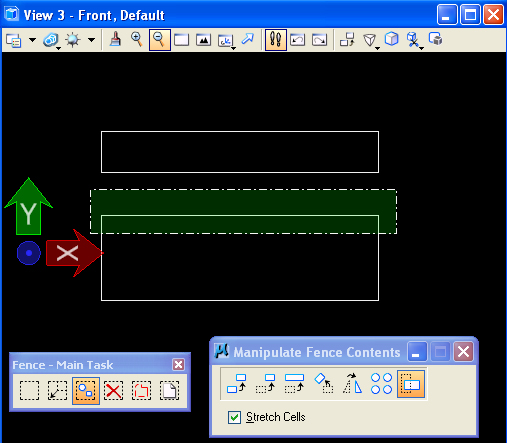
3. Non-rectangular Fence
Select the "Front" view and then the "front: ACS from the Auxiliary Coordinates Dialog box. Next, select the" Fence" tool, change the fence type to "Shape", and draw an arbitrary polygon over the front view.
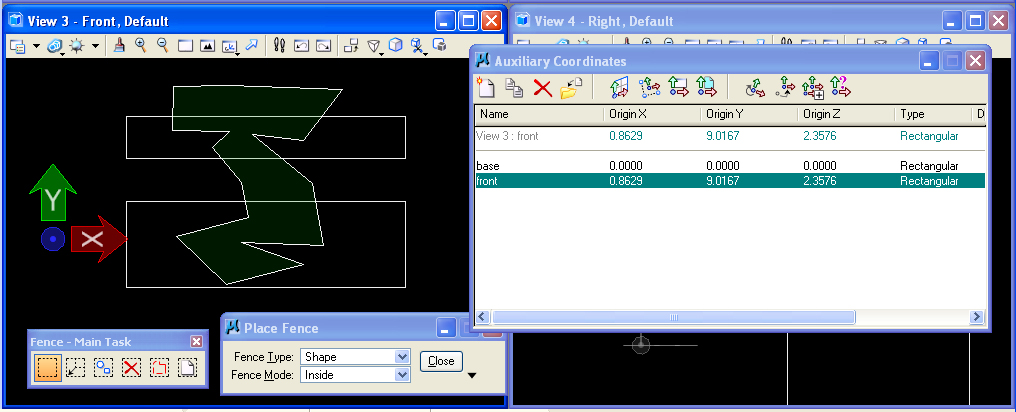
Zoom out of the "Front" view and use the "Manipulate Fence Contents/Move" option to clip the arbitrary shape to a location above the slabs. Note that the operation cuts the arbitrary shape out of the cubes and moves it above them.
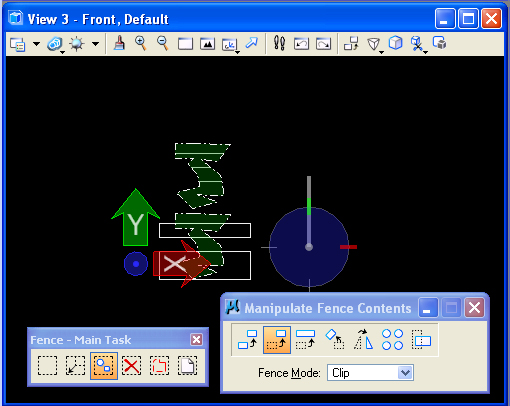 |
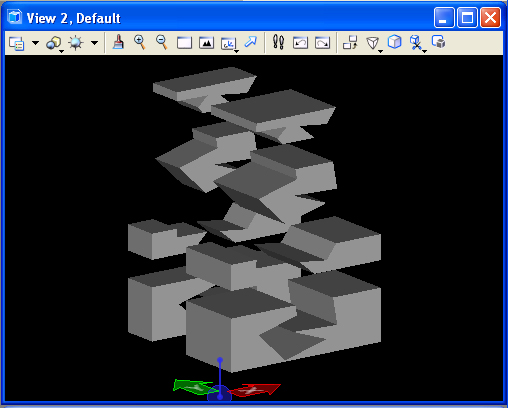 |
PART III. RENDERING WITH THE FENCE TOOL
The technique involves using a "key-in command". Go to the "Utilities/Key-in" menu and enter the command "render view raytrace" followed by the "return" key.

In View 2, draw a "block" Fence over a portion of the view window. In the Visualization, adjust the solar lighting using the W1 tool, select the "Render" (Q1) tool, and choose the "Fence" option. The result is that a smaller sample portion of the view window is rendered. This can be a very efficient way to sample the rendering quality without having to expend much greater time in testing the entire view window. Note that rendering 1/4th of the view window in Ray Trace will be significantly faster than doing the whole view.
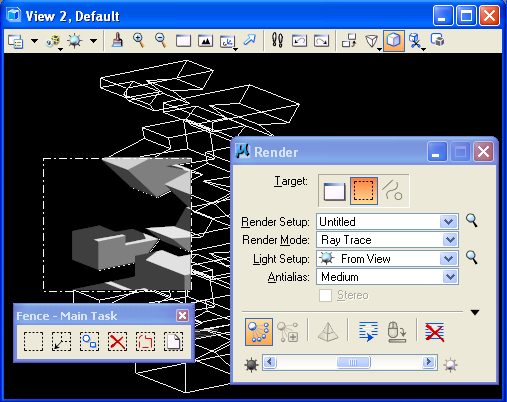
Note that the Render dialog box also allows you to render individual objects in several render modes, such as Phong or Smooth shading. This is achieved by pre-selecting the object you wish to render. Use the key-in command "Render View Phong" and then selecting the third icon in the "Render" dialog box as depicted below. Note that, this doens't work in Ray Trace mode (since the rendering algorithm is based on backward tracing of rays for every pixel in the rendered area.
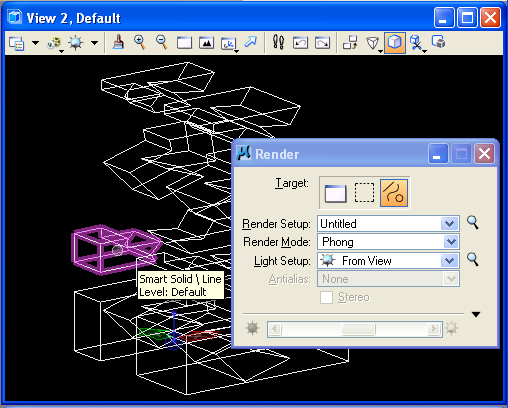 |
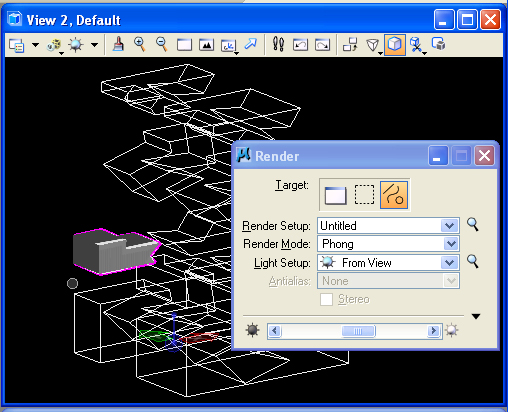 |
PART IV: EDIT BY SURFACE PROJECTION
1.
Erase the current elements in the model, and place a rectangular block
and a bspline curve in the ground plane. Next, within the Solids task,
use the projection tool (T1)to project the bspline curve into the
vertical direction.
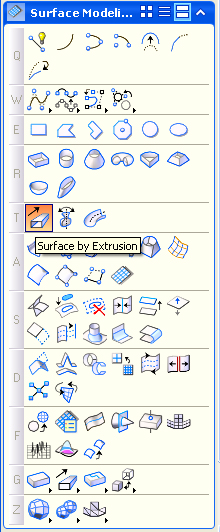 |
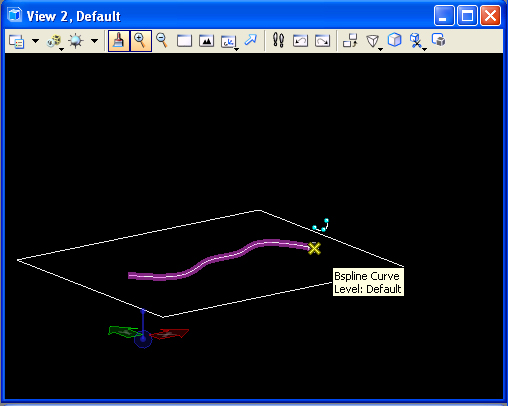 |
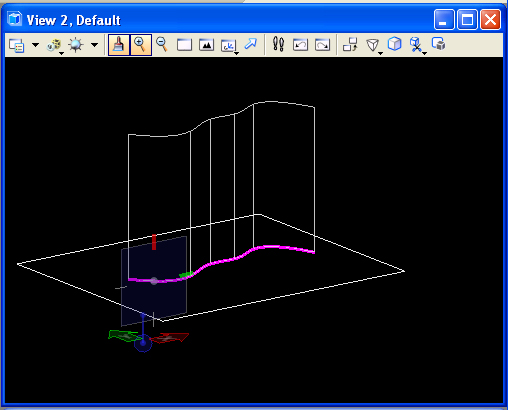 |
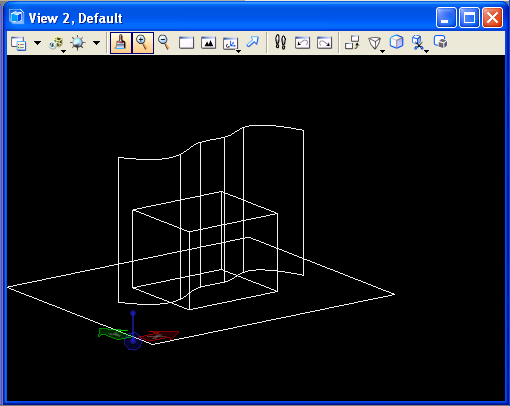
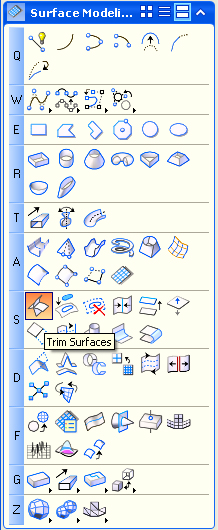 |
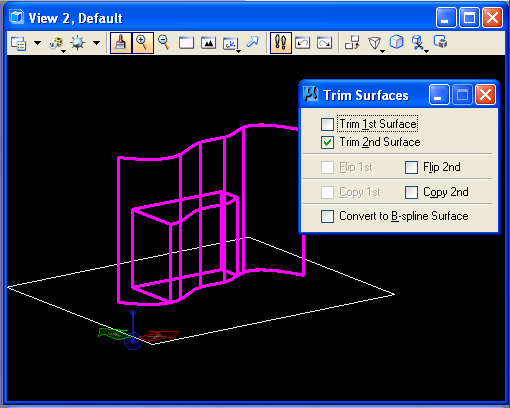 |
The reverse part of the slab is trimmed away if the "Flip 2nd' option is turned on.
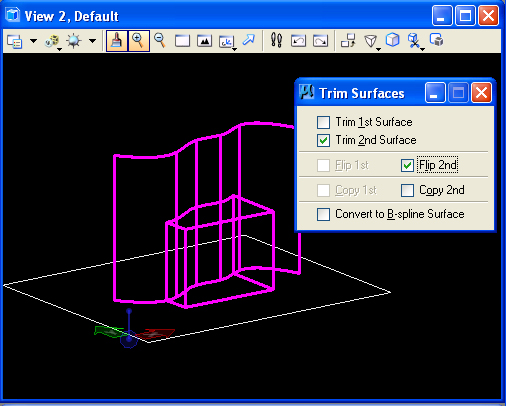 |
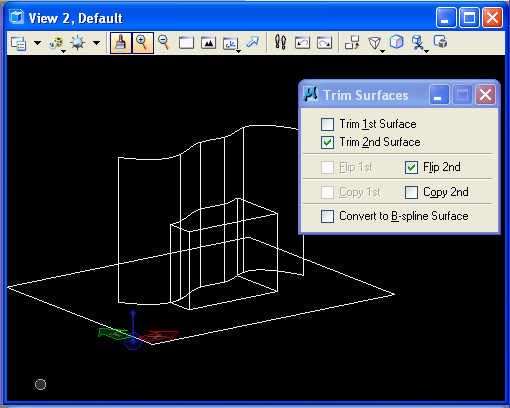 |
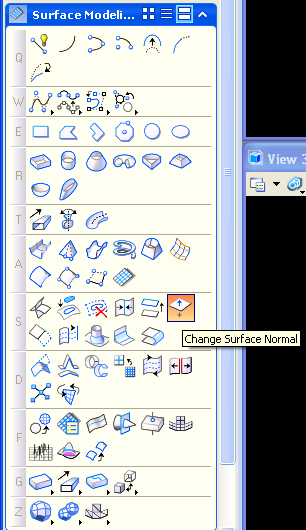 |
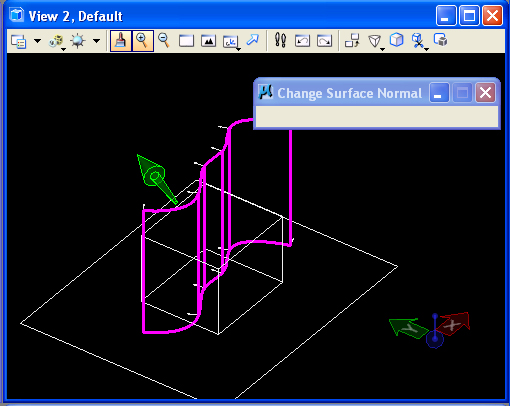 |
PART V. CUTTING SOLID WITH DOUBLY CURVED SURFACE
1
In the Solids Modeling task, create a Slab Solid with the "E1" tool.
2 Using Auxiliary
Coordinates
Menu, determine an ACS with
three points on front face of the cube.
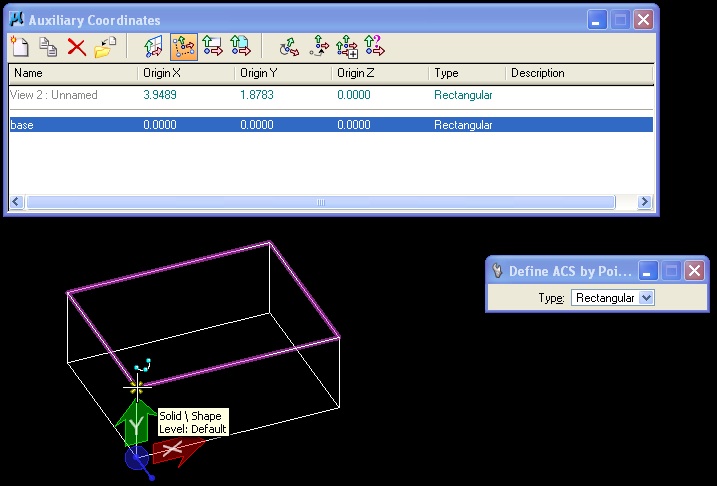
3 From the Solids Modeling task, using the "Q3" tool, add
a B-spline by Points from the mid-point of the left-hand edge to the
mid-point of the right-hand edge of the front face of the slab..
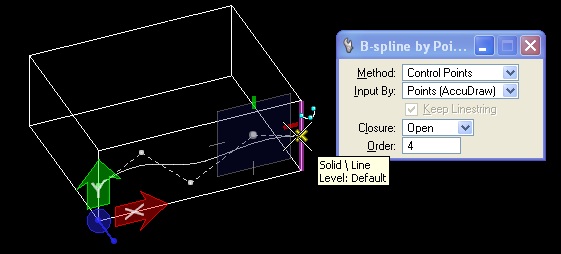
4 Simillary, using the same ACS, add a B-spline by Points to the rear face of the Solid Slab.
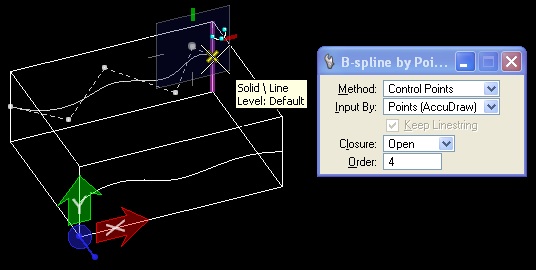
5 Change the ACS to the left-side of the Solid Slab, and add two additional B-splines linking up to those on the front an rear faces.
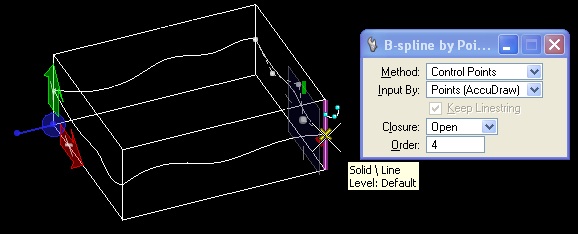
6.
Working from the Surface Modeling task, pre-select the four B-splines,
and then choose the "A7" Surface by Edge Curves tool to create a doubly
curved surface.
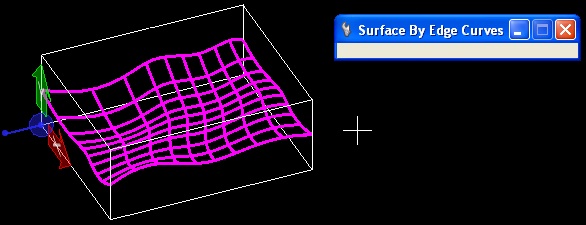
7 In the Solids Modeling task, use the "T11" Cut Solids by Curves" tool, set the parameters to "Cut Direction" = "Both", "Cut Mode" = "Define Depth", select on "Cut Depth" and set is value to a nominal 0.0001, and select on "Split Solid".
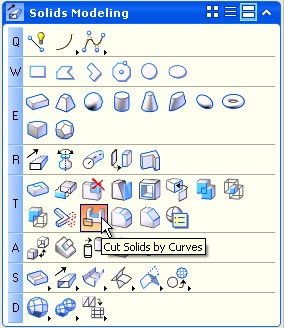
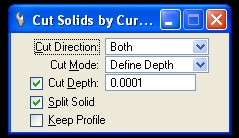
8 Select the Solid and then select the Surface, and enter a data point to split the solid and another to confirm it.
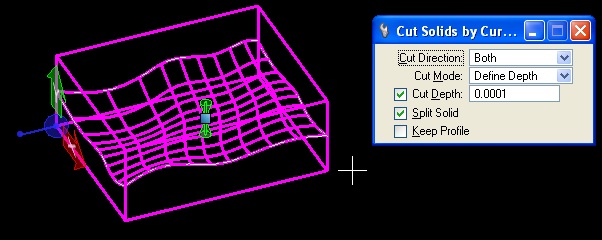
9 The result is that the solid slab is devided into an upper and lower part.
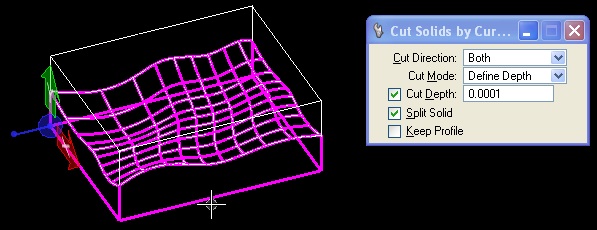
10 Alternatively, choose the "Cut Mode" = "Define Depth" option, but do not select the check-box for the "Cut Depth" option, enter the data points needed to generate split and confirm it, and the solid will split without any depth between upper and lower parts.
